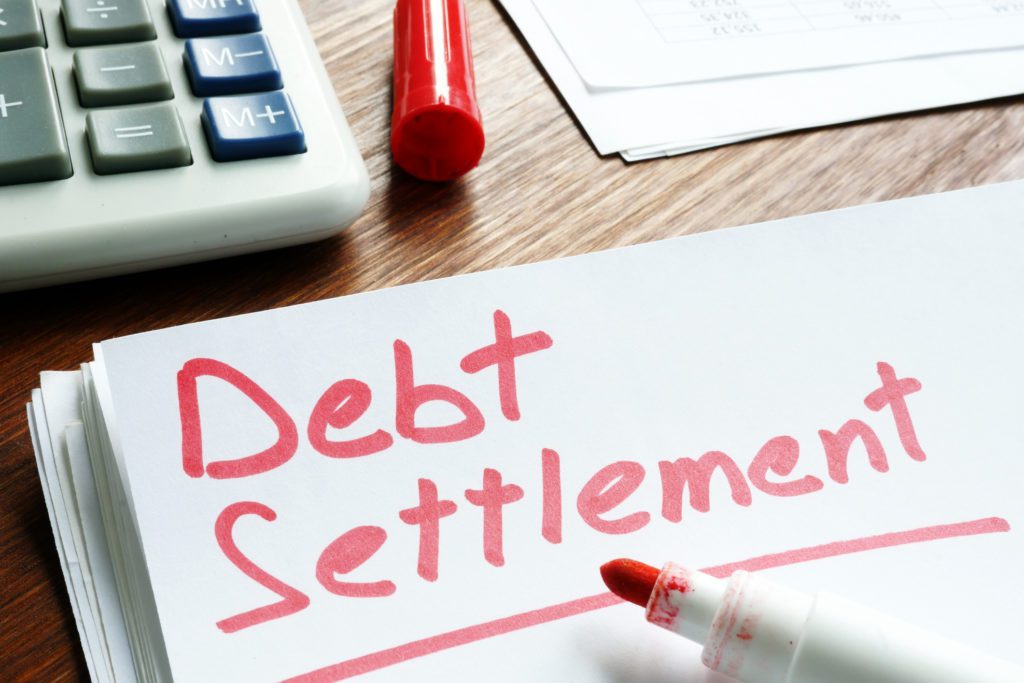
A Complete Guide to Debt Settlements
Starting with bad news is never fun. However, it is essential to know that in 2020, the average U.S. consumer debt reached new record levels. Outstanding consumer debt increased to just under $14.9 trillion as the U.S. economy struggled with the outbreak of the coronavirus pandemic.
How bad is the average consumer debt in 2020?
It is common to take out debt for several life expenses. This includes mortgages, auto loans, student loans, personal loans, credit cards, and more. Debt can be a valuable financial tool if you can stay on top of your payments and make intelligent decisions to avoid paying interest.
However, if you fall behind on your debt payments, it can be completely overwhelming. Delinquent debt can impact your credit and leave you feeling defeated. If you have debt piling up, you are not alone compared.
Here are some statistics for consumer debt in the U.S.
- Personal loans: Debt for personal loans totals grew to $323.55 billion.
- Retail credit card debt: Retail credit card debt fell to $79.91 billion.
- Mortgage loans: Debt for Mortgages jumped to the highest it’s ever been at $10.31 trillion.
- Auto loans: Debt for auto loans climbed to the highest point on record of $1.35 trillion.
- Student loans: Debt for student loans is also at an all-time high of $1.57 trillion.
As you can see, you are not alone. We are here to help and wanted to provide a complete Guide to debt settlement for you to better deal with large amounts of debt. Let’s take a look at what you need to know to help you make the best decision for your finances and your future.
What Is Debt Settlement?
You might also hear debt settlement referred to as “debt relief” or “debt adjustment.” This is a process through which delinquent debt can be resolved for less money than the total amount you owe. This is achieved by promising the lender a lump sum payment for a substantial amount of the debt.
How much of your debt you will have to pay off through this method depends on your situation. Debt settlement offers can range anywhere from 10% to 50% of the total amount you owe. The creditor then decides whether or not to accept any of the offers.
Consumers can work to settle debt independently or hire debt settlement programs or firms to do this for them. The fee that you pay to these firms is typically a percentage of the enrolled debt. Enrolled debt is the amount of debt that you have when you first enroll in the program.
These companies cannot legally charge you this fee until they have successfully settled your debt. In general, these fees range between 20% and 25%.
In summary, debt settlement involves the following:
- Debt settlement can save you 10% to 50% of what you owe.
- Debt settlement companies cannot legally charge you any fees until a settlement has been agreed upon.
- Debt settlement companies’ fees range from 20% and 25%.
How Does Debt Settlement Work?
When you hire a debt settlement firm to work to settle your debt on your behalf, they usually offer to contact your creditors to negotiate a payment plan, reduce your debt, or pay your debt.
This company might talk to the creditor and negotiate a lump-sum payment that is less than the total amount you owe. As a part of the process, you might have to make regular deposits into an account administered by a third party, though it is still under your control. This is a method through which you can save money that can go towards your lump payment.
It is also possible that the debt settlement company will advise you to stop making payments to your creditor until they can reach a debt settlement agreement with them.
Once an agreement has been reached, you then have to agree to the agreement. You will have to make at least one payment to the debt collector or creditor for the amount that has been agreed upon. At that point, the debt settlement company can start to charge you for the services they provided.
It is worth noting that it isn’t guaranteed that the company or program will agree to all of the debts you have.
Here is a quick breakdown of the stages in debt settlement:
- You engage a debt settlement company.
- The debt settlement company contacts your creditors to negotiate a payment plan, reduce your debt, or pay your debt.
- You reach an agreement with the creditors, and then a plan is set in place on how to pay off the debt.

What Are the Pros and Cons of Debt Settlement?
There are definite benefits and drawbacks to choosing debt settlement as a solution to your debt issues. Let’s look at some of the ways it can help you and what the risks are.
1. The Advantages of Debt Settlement
When you use a debt settlement company, it can help you to lower the amount of debt you have. This also means that you can stop being pursued by debt collectors and creditors. It can also be a helpful strategy if you are facing the threat of bankruptcy.
2. Disadvantages of Debt Settlement
One of the potential risks of using a debt settlement company is that your creditors might not be willing to negotiate. You could also end up with more debt after the fact. If the company isn’t able to agree with the creditor and you have stopped making payments, you could pay interest or late fees. If they do come up with an agreement, you will likely have to pay taxes on the portion of the debt that was forgiven.
There is also the risk that the debt settlement company will charge you fees for other unsettled debts once they have negotiated one settlement and you have made a payment.
There can also be negative impacts on your credit when you go this route. This is because you might be encouraged to stop making payments while you are saving up for the lump sum payment. Delinquent payments can end up lowering your credit score, and there’s even the possibility that you will be sued over your debt by the creditor.
How Long Does Debt Settlement Take?
It usually takes between three and four years for the entirety of the debt settlement process when you work with a debt settlement company. This is because it takes time for the settlement firm to negotiate many different agreements with your other creditors. It takes time for you to put funds into the account that has been set aside for your settlement payments.
How Much Does Debt Settlement Cost?
Depending on your state’s laws, the fees that a debt settlement firm charges may vary. You can expect to pay somewhere between 15 and 25% of the amount of debt you had when you enrolled.
For example, let’s say that you had $20,000 in debt when you enrolled. The company came to a settlement with your creditor that allows you only to pay $10,000. If their rate is 25%, you will owe the company $5,000, meaning that your total cost is $15,000.
On top of that, though, the forgiven debt (in this case, $10,000) is considered taxable by the IRS. Any debt that has been forgiven that is over $600 is deemed to be taxable. You will have to report your forgiven debt on your income taxes.
In summary, the main cost to settle your debt is as follows:
- You can pay around 15% to 25% of the amount of debt you had at the date you enrolled.
- Uncle Sam will still consider anything over $600 to be taxable.
What Are the Alternatives to Debt Settlement?
There are some other options when it comes to dealing with overwhelming debt. Considering the risks associated with hiring a debt settlement firm, you will want to explore the different choices before going this route.
1. Transfer Balances
If you have credit card debt, a balance transfer might be a reasonable option. This is a form of debt consolidation that can be used with credit cards. With this method, you move the debt from one or several other credit cards to a different credit card.
If you qualify, you can apply for a balance transfer card that has a 0% introductory APR for a while. This means that you won’t have to pay interest on the debt, giving you some breathing room and allowing you to catch up. There is often a fee that is charged to complete this type of balance transfer.
You want to do the math to see if you will end up paying more money on the interest of your current card than you will for the fees associated with the balance transfer. You will also want to make sure that you can pay off the entire balance before the introductory period is over.
2. Consolidate Your Debt
There are several different ways you can consolidate your debt, one of which is through a balance transfer card. If you don’t just have credit card debt, though, there are other options.
These include taking out a personal loan, a home equity loan, a HELOC, and debt consolidation programs. You will want to ensure that the loan you take out has a better interest rate than the loans you already have. It’s also essential to have a plan in place for how you will repay your debt, as you are essentially just kicking the can down the road if you don’t.
3. Negotiate Your Own Settlement
You can also work to negotiate your own settlement with your creditor or collector. Consider offering an amount of money that you could immediately pay, even if it isn’t as much as you owe in total. It’s worth noting that you might still have to pay taxes on the forgiven debt since this is considered taxable income.
Some experts say that the best way to deal with this issue on your own is to call your lenders and discuss your options when it comes to a debt settlement plan. You might find that they are willing to work with you, but this will depend on the situation.
4. Seek Counseling From a Nonprofit Credit Service
Some credit counseling services offer low-cost or free advice on debt management and budgeting. While these services don’t usually negotiate to reduce debt, they might help by working with creditors to stop late fees and collection calls or by helping create payment plans.
(Are you deal with debt collectors that are harassing you and your family? You can learn more about stopping debt harassment here.)
5. Bankruptcy
Bankruptcy isn’t the ideal solution for anyone, but it might make sense in certain circumstances. Bankruptcy makes one’s financial troubles a matter of public record, and you might have to surrender property as a part of the deal. Declaring bankruptcy can also limit a consumer’s employment options.
Bankruptcy stays on your credit report for ten years. However, it still might allow your credit scores to recover faster than through debt settlement, depending on your circumstances. This process is also usually faster than debt settlement.

Getting on Top of Your Finances
It is essential to do a realistic assessment of your financial situation when you are ridden with debt. Even if you can reach a debt settlement with your creditor, you are at risk of falling into the same problem again if you don’t know how much money you make and how much money you spend.
Many different resources are available online to help you create a budget for yourself and learn about money management techniques. You can also find information like this in bookstores or at your public library. You might find it worth investing in accounting software to help you manage your budget and balance your checkbook.
For more information on coping with debt, check out the Federal Trade Commission’s resources to help you choose the best option when it comes to dealing with debt.
Are You Overwhelmed By Debt?
As you can see, there are some benefits to debt settlements and many associated risks. When you are overwhelmed with debt, there are many different options to help you deal with your financial troubles and get on with your life.
It can be incredibly stressful to be burdened by debt. It’s important to understand, though, that you are not alone and that there is help for you. At the Consumer Protection Group, our goal is to help give you hope and empower you regarding your finances. We are dedicated to assisting consumers with counseling and education to help them achieve their goal of financial stability.
We offer a complete debt management service. If it’s time for you to get help, contact us today.

